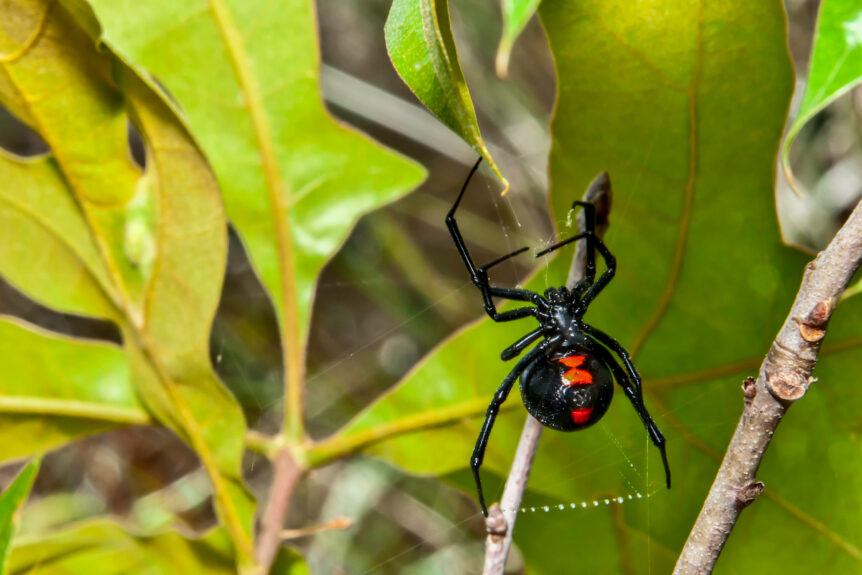Black Widow Spiders in Southwest Florida
In the lush landscapes of Southwest Florida, a variety of wildlife thrives, including some of the most misunderstood arachnids—Black Widow spiders. This article delves into the intriguing world of Black Widows, comparing them with their less venomous cousins, the Brown Widows, and provides insight into identification, risks, and necessary actions following a bite. Through a comprehensive examination, we aim to demystify these creatures and offer practical advice for residents and visitors of Southwest Florida.
Understanding Black Widow Spiders
The Biology and Behavior of Black Widow Spiders
Black Widow spiders, known scientifically as Latrodectus mactans, are renowned for their potent venom, which they use to immobilize their prey. These spiders are easily recognizable by their shiny, jet-black coloring and the distinctive red hourglass shape on the underside of their abdomens. Typically, Black Widows are solitary creatures, preferring to dwell in undisturbed areas.
Habitat and Distribution in Southwest Florida
In Southwest Florida, Black Widows find homes in dark, secluded spaces like sheds, garages, and under rocks. Their presence in these areas makes accidental encounters possible, particularly when moving seldom-disturbed objects where they might nest.
The Brown Widow—A Case of Mistaken Identity
Distinguishing Features of Brown Widow Spiders
The Brown Widow spider, Latrodectus geometricus, while similar in behavior to the Black Widow, exhibits several distinct differences. These spiders have a brownish color and are often marked with lighter brown or yellowish spots on their back, and their hourglass marking is usually orange or yellowish.
Comparative Analysis: Venom Potency and Aggressiveness
Although both spiders possess venom, the Brown Widow is generally less aggressive and its venom is considered less toxic than that of the Black Widow. Understanding these differences is crucial in managing fear and response to encounters with these spiders.
When Spiders Become a Concern
Identifying a Black Widow Spider
Identification is key in differentiating between the Black Widow and other less dangerous spiders. Key characteristics include the spider’s black color, glossy body, and the prominent red hourglass marking on the underside of the female’s abdomen. Males and juveniles, however, can be lighter in color and may lack the distinctive hourglass mark.
Should You Worry About Black Widow Spiders?
While venomous, Black Widows are not naturally aggressive and only bite in defense when threatened. Bites are relatively rare, and fatalities are even rarer, thanks to medical advances in treating spider bites.
First Aid and Medical Attention for Black Widow Bites
Immediate responses to a Black Widow bite should include cleaning the wound with soap and water, applying ice to reduce swelling, and seeking medical attention, as antivenom is available in severe cases. Symptoms can include severe pain, muscle cramps, and nausea, which manifest within a few hours of the bite.
Preventive Measures to Avoid Encounters
To minimize encounters with Black Widow spiders, keep outdoor areas clear of debris, seal cracks in building exteriors, and be cautious when handling firewood, boxes, and outdoor furniture.
Black Widow spiders, while venomous, are a natural part of the ecosystem in Southwest Florida. By understanding their behavior, knowing how to identify them, and taking preventive measures, residents and visitors can coexist with these spiders without undue fear. Remember, knowledge and caution are key in managing any potential risks associated with these misunderstood creatures.
Ready to elevate your outdoor space with Lawn Care Extraordinaire? Schedule a consultation and stay connected through social media and newsletters for the latest tips and updates. Take the first step towards a healthier, more beautiful, and pest-free lawn today.
Black Widow Spiders FAQ
How can I tell if a spider in my home is a Black Widow?
Look for the glossy black body and distinctive red hourglass marking on the underside of the female’s abdomen. Males and juveniles might not have the hourglass marking and can be lighter in color.
What should I do if I think I've been bitten by a Black Widow?
Clean the area with soap and water, apply ice, and seek medical attention promptly, especially if severe symptoms develop.
Are Black Widow spiders aggressive?
No, they are generally not aggressive and bite only in self-defense when disturbed or threatened.
Where are Black Widow spiders most commonly found in Southwest Florida?
They are often found in dark, undisturbed areas such as sheds, garages, and underneath rocks.
How dangerous is the bite of a Brown Widow compared to a Black Widow?
The Brown Widow’s bite is considered less dangerous, with venom that is less potent than the Black Widow’s.
What can I do to prevent Black Widow spiders from settling in my property?
Maintain cleanliness in yards, seal cracks and crevices, and handle items in garages, sheds, and gardens with care.

